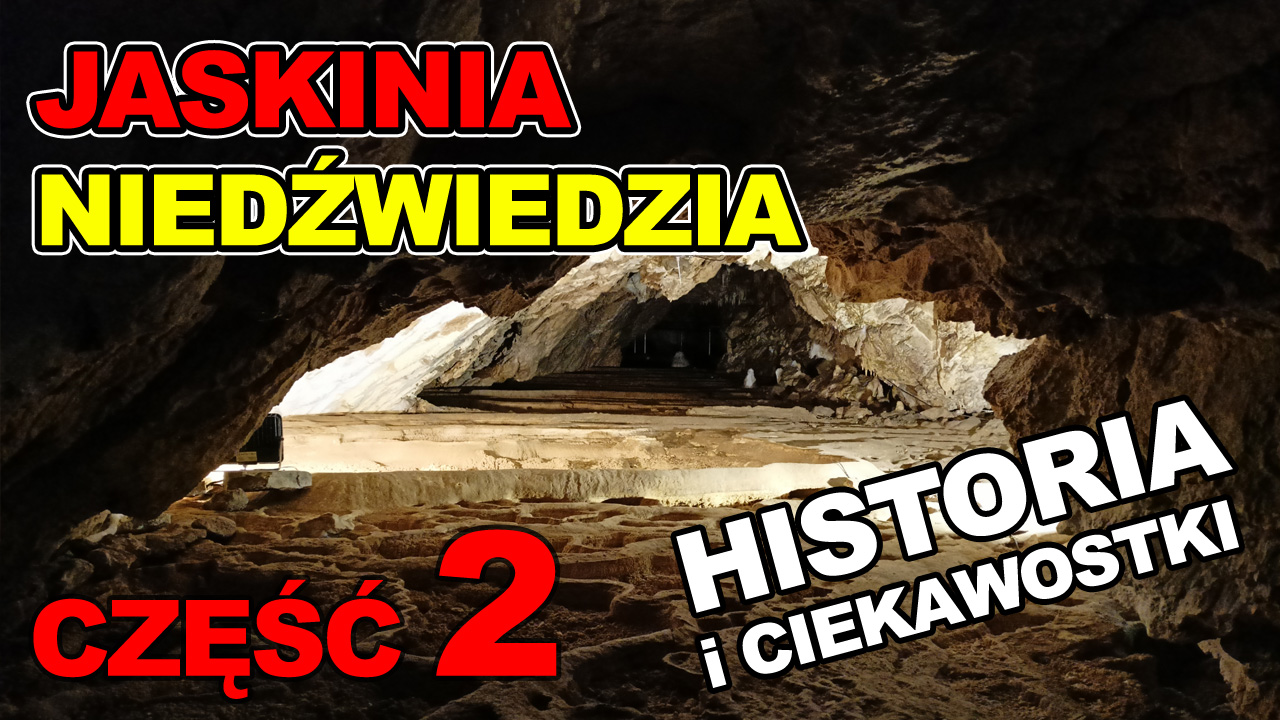

Taternictwo Jaskiniowe to połączenie sportu, turystyki i często nauki w jednym. Już w bardzo odległych czasach jaskinie przyciągały poszukiwaczy skarbów lub... mleka wapiennego jako leku, następnie badaczy naukowych i zwykłych turystów wiedzionych jedynie ciekawością, wreszcie taterników szczególnej odmiany, zwanych obecnie taternikami jaskiniowymi lub podziemnymi.
🇬🇧 EN: Cave climbing is a combination of sport, tourism and often science in one. Already in very distant times, the caves attracted seekers of treasures or milk of lime as medicine, then scientific researchers and ordinary tourists guided only by curiosity, and finally mountaineers of a special type, now called cave or underground mountaineers.
Jaskinia Niedźwiedzia - Trasa ekstremalna - CZĘŚĆ 2
Dolne Partie Jaskini Niedźwiedziej -Czyli części jaskini poza trasa turystyczną. To jaskinia bardzo różna. Od ciasnych i błotnistych korytarzyków po korytarze, zawaliska, zaciski i sporych rozmiarów sale jaskiniowe wypełnione piękną szatą naciekową.
Wszystko zaczyna się od Wielkiej Szczeliny, która łączy poziom „turystyczny” z piętrami dolnymi. Za sprawą Trasy Ekstremalnej bez specjalnych zezwoleń osoby, które chcą przeżyć fajna przygodę mogą zejść w Stare Dolne Partie.
To system ciasnych korytarzy, blokowisk skalnych i niewielkich salek. W dużej mierze części te są wypełnione młodymi osadami jaskiniowymi, bez kości zwierząt. Do najciekawszych miejsc należą: Salka Żyrafy z ładnymi pokrywami mleka wapiennego i niezwykle uformowanym przez wodę stropem, Salka Blokowa wypełniona dużymi blokami skalnymi oraz Salka z Wodospadem. Rzeczywiście szumi tam potok, ale „wodospadu” trzeba trochę poszukać…. , bo ma ok. 30 cm wysokości. Jego woda przepływa dalej w tzw. Korytarze Błotne.
Nowe Dolne Partie to część tylko dla speleologów. Te ciągi zostały odkryte w styczniu 1972 roku. Dokonała tego grupa miejscowych grotołazów w składzie: Zdzisław Dumański, Krzysztof Łukaszewicz, Jerzy Panek i Jerzy Bieroński.
Ponad 40 lat od odkrycia są one w dalszym ciągu przedmiotem badań i eksploracji, jak również ścisłej ochrony. Jest to rozległy system korytarzy i sal z efektowną szatą naciekową. Nie brakuje też miejsc ciasnych i trudnych do pokonania, stąd wstęp w Nowe Dolne Partie mają tylko speleolodzy na podstawie stosownych zezwoleń. Najbardziej znanymi miejscami, będącymi symbolem i znakiem rozpoznawczym Nowych Dolnych Pięter są: Sala Szampańska, Korytarz Diamentowy z bardzo bogatą szatą naciekową. Do mniej znanych i trudniej dostępnych części zaliczamy Partie Błotne z Meandrem, Korytarz Rafy Koralowej czy Korytarz Kalcytowego Potoku.
Do Nowych Dolnych Partii Jaskini Niedźwiedziej, schodzi się przez ciasne, zaciskowe korytarzyki. Za zaciskiem i obłoconym kilkunastometrowym progiem znajduje się Salka z Okienkiem. Nad tą Salką rozciąga się system szczelin i korytarzyków stających dęba, jak korkociągi. Dalsza część drogi to poziomy korytarzyk o trójkątnym przekroju i dnie wyścielonym śliskim błotem. Jedzie się w nim na brzuchu aż do miejsca, gdzie przybiera on kształt dość ciasnej pionowej szczeliny. Dno obniża się i wypełnia rzadkim błotem, na którym zalega woda. Ten fragment drogi można przebyć górą, śliską błotną zapieraczką, trawersując w poprzek tak zwanej Ściany Płaczu albo zdecydować się na pięciometrowe czołganie w niskiej rurze wypełnionej błotem o konsystencji śmietany i temperaturze około 6 stopni. Jeszcze kilkanaście metrów niskiego korytarzyka i nagle widać ogromny, jak na warunki sudeckie, korytarz. Jego dno zawalone jest blokami wapiennymi, a w stropie znajduje się komin, do końca którego nie sięga światło mocnej latarki. Po kilkunastu metrach zaczyna się Sala Szampańska, jedna z większych w „starej” Jaskini Niedźwiedziej.
Prawą stronę Sali Szampańskiej pokrywa gruba i bardzo urozmaicona polewa naciekowa, spływająca ze ścian z wysokości kilkudziesięciu metrów i sięgająca skalnych bloków dna. Tworzy ona kaskady z draperiami i stalaktytami, a od dołu obramowana jest misami martwicowymi wypełnionymi wodą.
Po pokonaniu szczelinami blokowiska oraz kilkunastu metrów wąskiego korytarza z ostrymi zębami i żebrami dochodzimy do dość obszernego zawaliskowego korytarza, prowadzącego do Ronda – niewielkiej zagłębionej salki wypełnionej naciekami. Od niej promieniście rozchodzi się kilka korytarzy. Dno Ronda zalegają bloki skalne i polewy naciekowe, między którymi, przelewając się przez kilka mis, przepływa podziemny potok. W wodzie Ronda żyje niewielki, biały i ślepy skorupiak – studniczek (Niphargus tatrensis).
Od Ronda w górę odchodzi Korytarz Kalcytowego Potoku, dość stromy korytarz o dnie i ścianach pokrytych pokrywami kalcytowymi. Przypomina wyglądem zastygły w biegu górski potok. W prawo, w stosunku do wejścia, znajduje się niewielkie płaskie przejście do Korytarza Diamentowego.
Korytarz ten, rozbudowany na szerokiej, skośnej szczelinie, z lewej strony pokryty jest w całości białymi naciekami kalcytowymi. Spotykamy tu te same formy depozycji wapiennych co w Sali Pałacowej, tyle że wielokrotnie większe. Niektóre draperie mają ponad metr szerokości, duże, głębokie misy wypełnione są zielonkawą wodą, a na ich dnie iskrzą się kalcytowe szczotki. Korytarz Diamentowy zamyka ogromna kolumna naciekowa o średnicy ponad 4 m u podstawy. Prawą jego stroną, w głębokiej szczelinie, płynie potok, przelewający się przez system studzienek, wydając charakterystyczne podzwaniające dudnienie. Partie Korytarza Diamentowego są jednolicie białe. Przedłużeniem Korytarza Diamentowego są dwa równolegle biegnące korytarze zwane Prawym i Lewym Wąsem. Ten na lewo doprowadza do dużego zawaliska, w stropie którego odkryto w 2012 r. przejście do dalszych – wcześniej nieznanych partii Jaskini - Partii Mastodonta… ale to już osobna historia.
Zapraszamy do zwiedzania: http://jaskinianiedzwiedzia.pl/
Zapraszam na:
🔵 https://www.facebook.com/KowalscyTeam
🟣 https://www.instagram.com/kamil_kowalski_team/
🇬🇧 EN: The lower parts of the Bear Cave - parts of the cave outside the tourist route. This is a very different cave. From narrow and muddy corridors to corridors, collapses, clamps and large cave halls filled with beautiful dripstone formations.
It all starts with the Great Rift, which connects the "tourist" level with the lower floors. Thanks to the Extreme Route, without special permits, people who want to experience a nice adventure can go down to the Old Lower Part.
It is a system of narrow corridors, rock blocks and small rooms. These parts are largely filled with young cave sediments, boneless animals. The most interesting places are: the Giraffe Room with nice covers of lime milk and an unusually water-shaped ceiling, the Block Room filled with large rock blocks and the Room with a Waterfall. There is indeed a stream rustling there, but you have to look for the "waterfall" a bit…. because it is approx. 30 cm tall. Its water flows further in the so-called Mud corridors.
Nowe Dolne Lotie is only for speleologists. These strings were discovered in January 1972. It was done by a group of local cavers: Zdzisław Dumański, Krzysztof Łukaszewicz, Jerzy Panek and Jerzy Bieroński.
More than 40 years after their discovery, they are still the subject of research and exploration, as well as strict protection. It is a vast system of corridors and rooms with an impressive dripstone form. There are also places that are tight and difficult to overcome, so only speleologists are allowed to enter Nowe Dolne Partie on the basis of appropriate permits. The most famous places, which are the symbol and hallmark of the New Lower Floors are: the Champagne Hall, the Diamond Corridor with a very rich dripstone form. The less known and less accessible parts include the Mud Parts with Meander, the Coral Reef Corridor and the Calcite Stream Corridor.
You descend to the New Lower Parts of the Bear Cave through tight, tight corridors. Behind the clamp and a muddy threshold of several meters there is a Room with a Window. Above this Hall there is a system of gaps and corridors rearing up like corkscrews. The rest of the road is a horizontal corridor with a triangular cross-section and a bottom lined with slippery mud. In it, you ride on your stomach until it takes the shape of a fairly tight vertical slit. The bottom lowers and is filled with thin mud filled with water. This part of the road can be traveled over the mountain, a slippery mud grinder, traversing the so-called Wailing Wall, or by crawling 5 meters in a low pipe filled with cream-like mud at a temperature of about 6 degrees. A dozen or so meters of a low corridor and suddenly you can see a huge, for the Sudeten conditions, a corridor. Its bottom is covered with limestone blocks, and there is a chimney in the ceiling, the end of which is not reached by the light of a powerful flashlight. After a dozen or so meters, the Champagne Room begins, one of the largest in the "old" Bear Cave.
The right side of the Champagne Hall is covered with a thick and very varied dripstone glaze, flowing down from the walls from a height of several dozen meters and reaching the rock blocks of the bottom. It forms cascades with draperies and stalactites, and is framed at the bottom by necrotic bowls filled with water.
After going through the cracks of the block of flats and a dozen or so meters of a narrow corridor with sharp teeth and ribs, we come to a fairly spacious corridor leading to Rondo - a small, hollow room filled with formations. Several corridors radiate from it. The bottom of the Rondo is covered with rock blocks and dripstones, between which an underground stream flows through several basins. In the water of Ronda lives a small, white and blind crustacean - niphargus tatrensis.
The Calcite Stream Corridor, a fairly steep corridor with a bottom and walls covered with calcite covers, goes up from the Rondo. It resembles a mountain stream frozen in its course. To the right of the entrance there is a slight flat passage to the Diamond Corridor.
This corridor, extended on a wide, oblique slit, on the left side is entirely covered with white calcite infiltrations. We encounter the same forms of limestone deposits as in the Palace Hall, but many times larger. Some of the draperies are over a meter wide, large, deep bowls are filled with greenish water, and at the bottom there are sparkling calcite brushes. The Diamond Corridor is closed by a huge dripstone column with a diameter of over 4 m at the base. On its right side, in a deep fissure, a stream flows, overflowing through the system of manholes, making a characteristic humming rumble. The parts of the Diamond Corridor are uniformly white. The Diamond Corridor is extended by two parallel corridors called the Right and Left Mustache. The one on the left leads to a large collapse, in the ceiling of which a passage to further - previously unknown parts of the Cave - the Mastodon Party was discovered in 2012 ... but that is another story.
We invite you to visit: http://jaskinianiedzwiedzia.pl/
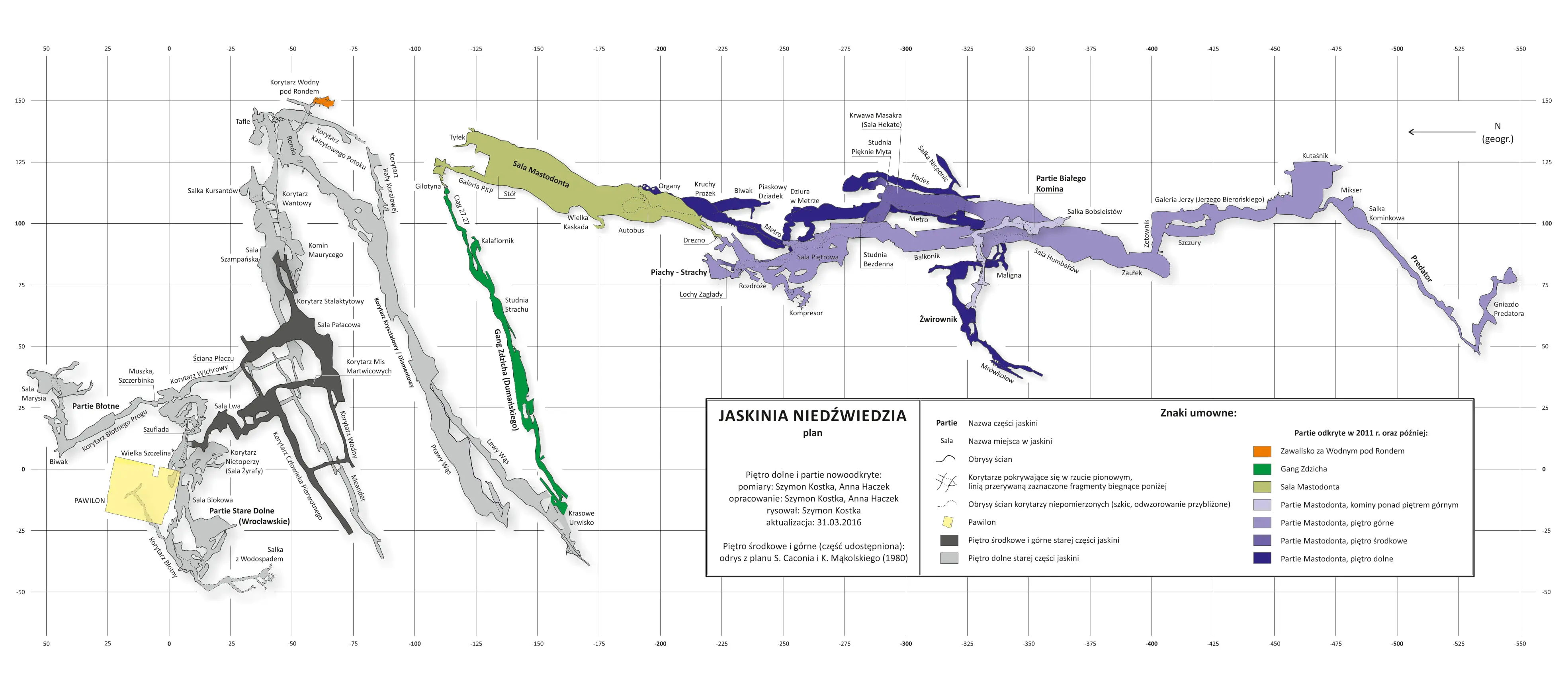
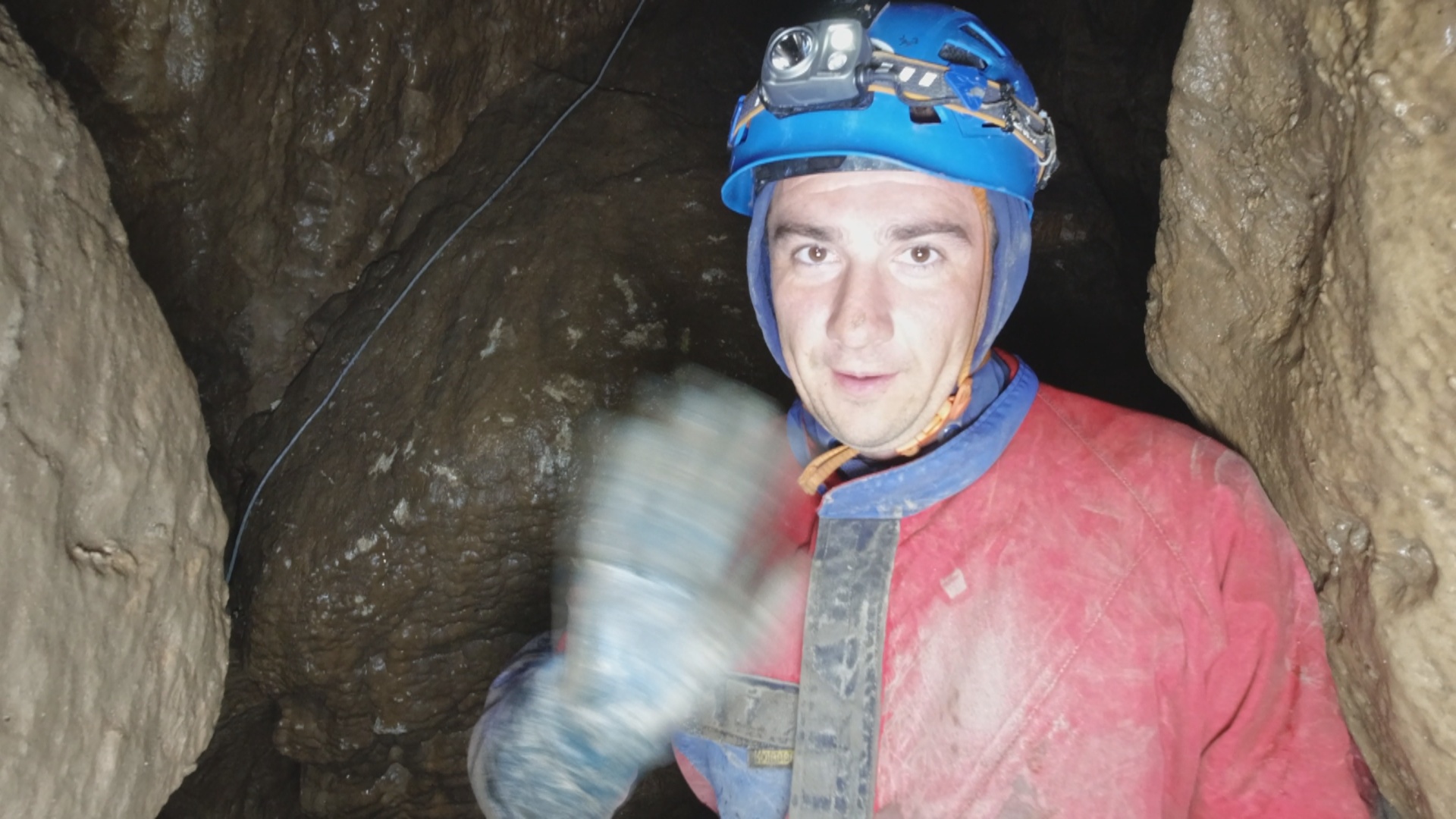
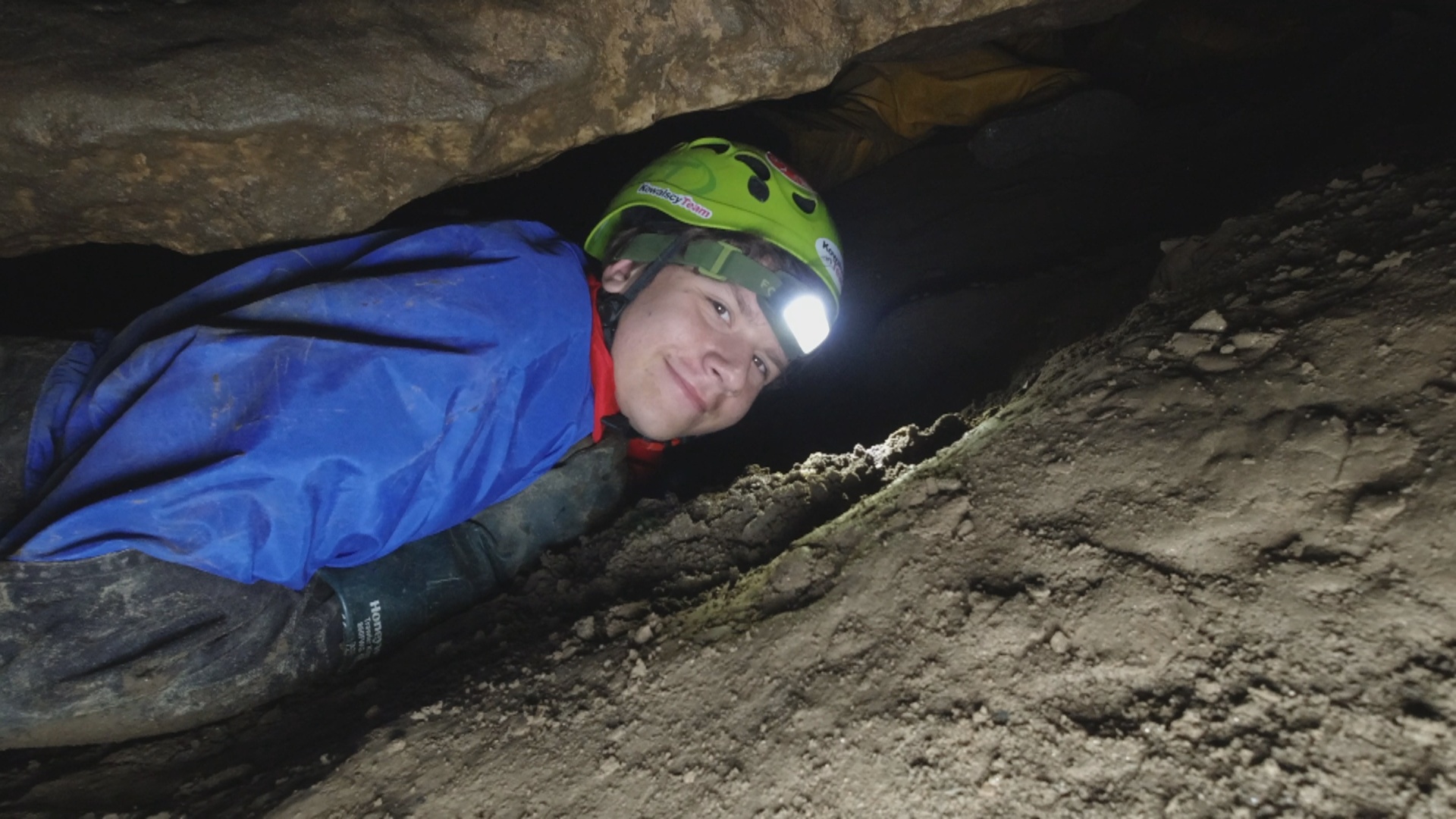
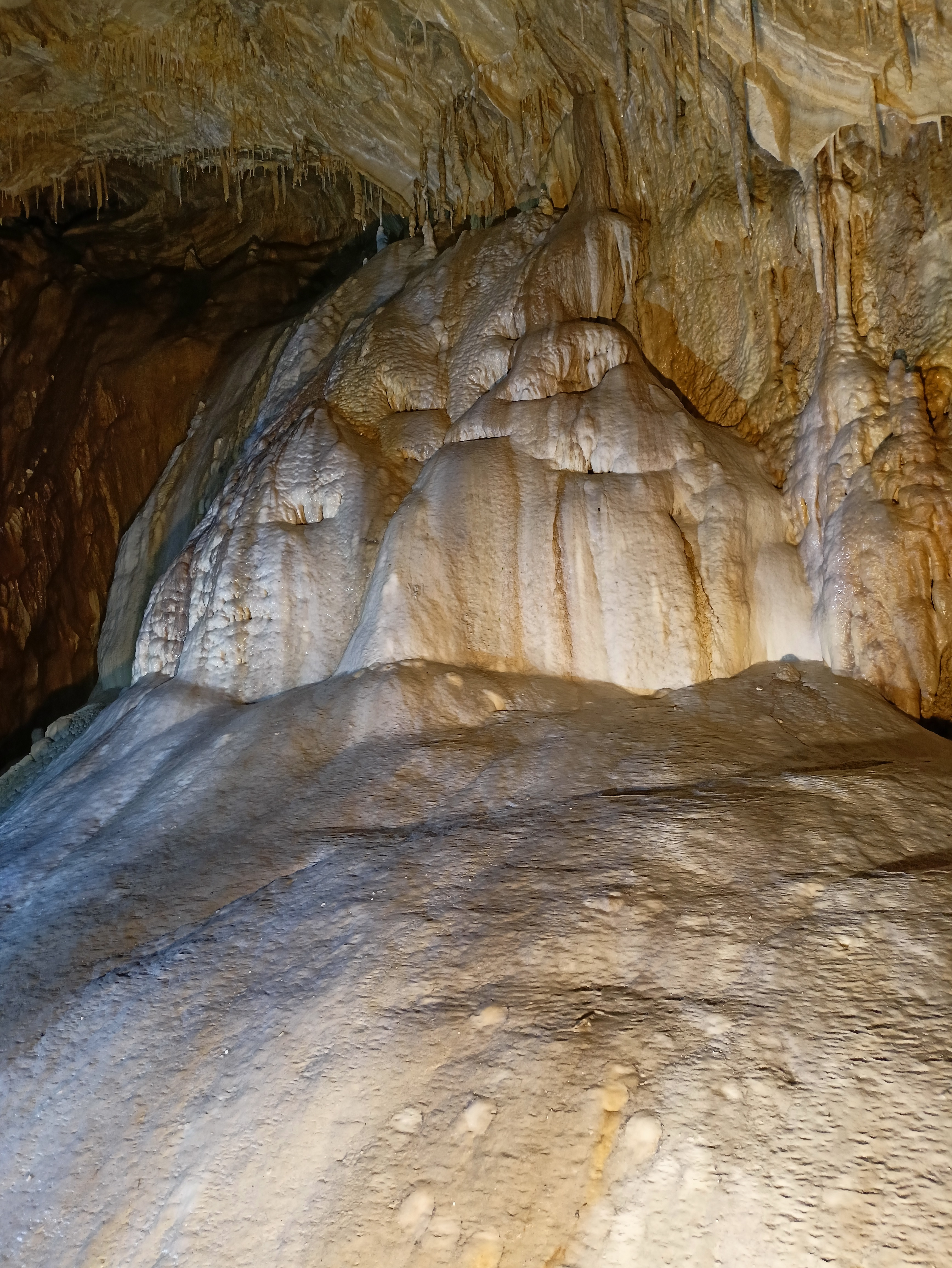
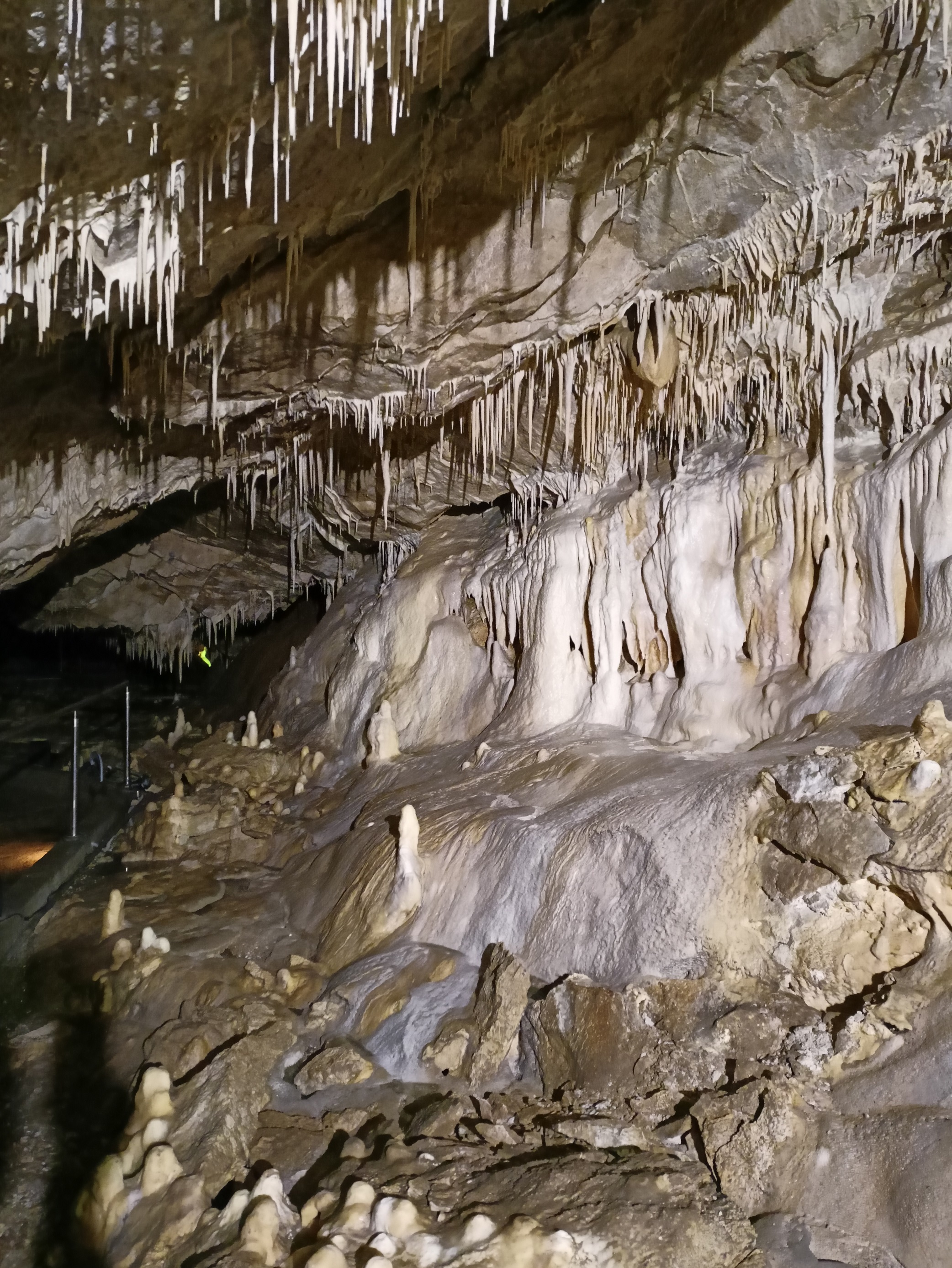

DONATE FOR A TRAVEL
STEEM | STEEM POWER | STEEM DOLLARS:
🇵🇱 Chcesz zostać Sponsorem nowych podróży i otrzymać prezenty?
Sprawdź i dowiedz się więcej >>
🇬🇧 Want to become a Travel Sponsor and receive gifts?
Check and learn more >>
🇵🇱 Obserwuj @kamilkowalski aby być na bieżąco i znać kolejne planowane cele.
🇬🇧 Follow @kamilkowalski to stay up to date and know the next planned goals.

Source of potential text plagiarism
Source of copy/paste
Plagiarism is the copying & pasting of others' work without giving credit to the original author or artist. Plagiarized posts are considered fraud.
Guide: Why and How People Abuse and Plagiarise
Fraud is discouraged by the community and may result in the account being Blacklisted.
Copying/Pasting content (full or partial texts, video links, art, etc.) with adding very little original content is frowned upon by the community. Publishing such content could be considered exploitation of the "Hive Reward Pool" and may result in the account being Blacklisted.
Please refrain from copying and pasting, or decline the rewards on those posts going forward.
If you believe this comment is in error, please contact us in #appeals in Discord.
Oryginalnym Kontentem jest film i fotografie...
Tekst jest podlinkowany....
Boty....